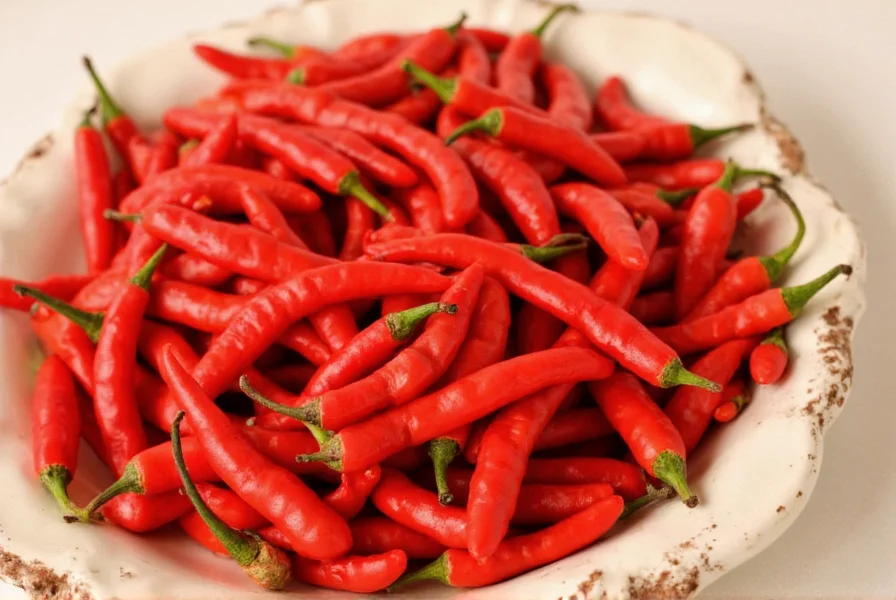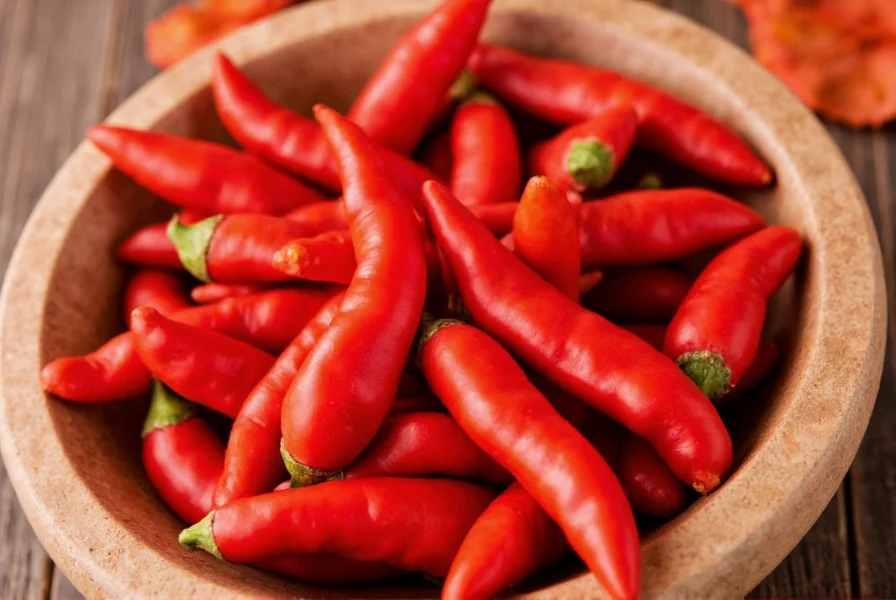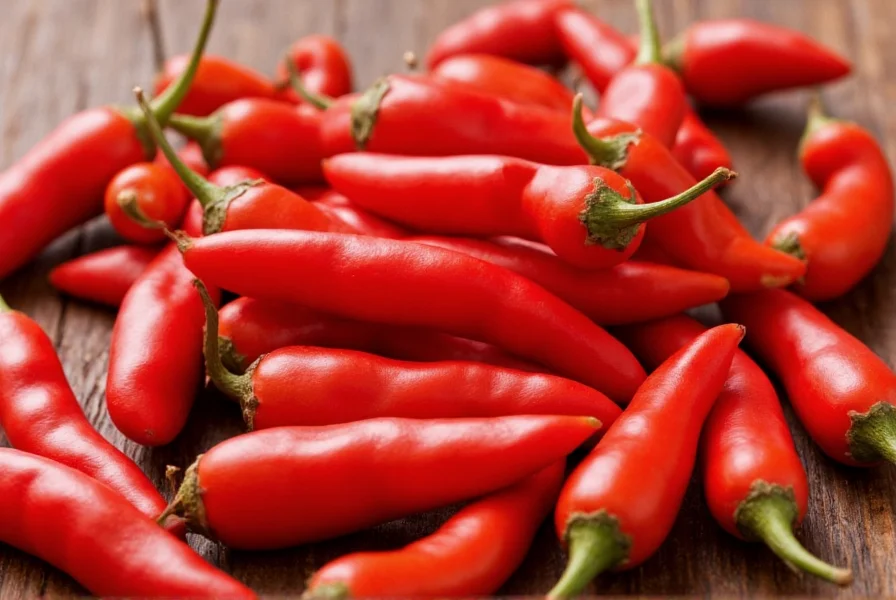Cayenne pepper stands as one of the most recognizable and widely used hot peppers in global cuisine. Understanding its specific characteristics helps distinguish it from the broader category of chili peppers that share similar appearances but differ significantly in heat, flavor, and application. This comprehensive guide explores the botanical identity, culinary applications, health properties, and practical usage of genuine cayenne pepper.
Botanical Identity and Characteristics
True cayenne peppers belong to the Capsicum annuum species but represent specific cultivars within this diverse family. These peppers typically measure 2-5 inches in length with a tapered shape that narrows to a pointed tip. When mature, they display a vibrant red color though some varieties may appear in yellow or orange hues before reaching full maturity.
The defining characteristic of cayenne pepper is its heat level. Measured on the Scoville scale, authentic cayenne ranges from 30,000 to 50,000 SHU (Scoville Heat Units), placing it significantly hotter than jalapeños (2,500-8,000 SHU) but milder than habaneros (100,000-350,000 SHU). This heat comes primarily from capsaicin, the compound responsible for the burning sensation associated with hot peppers.

Culinary Applications of Cayenne Pepper
Chefs and home cooks value cayenne pepper for both its heat and distinctive flavor profile. Unlike some hotter peppers that primarily deliver intense heat with minimal flavor, cayenne offers a complex taste with fruity undertones beneath its fiery punch. This makes it particularly valuable in applications where both heat and flavor matter.
In traditional cuisines, cayenne appears prominently in:
- Creole and Cajun cooking, where it forms the "holy trinity" of spices
- Indian curries and masalas for controlled heat
- Mexican salsas and mole sauces
- African stews and spice blends
- Asian stir-fries and dipping sauces
When using cayenne pepper in cooking, consider these professional tips:
- Add ground cayenne early in cooking for deeper flavor integration
- Use fresh cayenne peppers toward the end of cooking to preserve brighter heat
- Balance cayenne's heat with acidic ingredients like lime or vinegar
- Start with small amounts (1/8 teaspoon) and build gradually
- Pair with complementary spices like cumin, garlic, and oregano
Health Properties and Scientific Research
Capsaicin, the active compound in cayenne pepper, has been the subject of extensive scientific research. Studies indicate several potential health benefits associated with moderate cayenne consumption:
| Health Aspect | Research Findings | Recommended Usage |
|---|---|---|
| Metabolism | Temporary increase in metabolic rate and fat oxidation | Small amounts in meals (1/4-1/2 tsp) |
| Pain Management | Topical capsaicin reduces pain signals | Medical-grade topical creams |
| Cardiovascular Health | Potential blood pressure regulation effects | Regular culinary use in balanced diet |
| Digestive Health | Stimulates digestive enzyme production | Small amounts before meals |
It's important to note that while research shows promise, cayenne pepper should be considered a complementary element in a healthy lifestyle rather than a medical treatment. Individuals with gastrointestinal conditions should consult healthcare providers before significantly increasing cayenne consumption.
Cayenne Pepper vs. Other Chili Varieties
Many consumers confuse cayenne pepper with other red chili peppers. Understanding these distinctions helps in proper culinary application:
- Cayenne vs. Red Pepper Flakes: While often used interchangeably, red pepper flakes typically contain a blend of chili varieties including cayenne, but may also include milder peppers like bell peppers. Pure cayenne offers more consistent heat.
- Cayenne vs. Paprika: Paprika ranges from sweet to hot varieties, but even hot paprika generally falls below cayenne in heat intensity. Hungarian paprika emphasizes flavor over heat.
- Cayenne vs. Bird's Eye Chili: Bird's eye chilies (common in Southeast Asia) typically measure 50,000-100,000 SHU, making them significantly hotter than standard cayenne.
- Cayenne vs. Crushed Red Pepper: In American grocery stores, "crushed red pepper" often contains a mixture that includes cayenne but may also feature other regional chili varieties.

Practical Usage and Storage Guidelines
For optimal flavor and heat retention, proper storage of cayenne pepper matters significantly. Whole dried cayenne peppers maintain quality for 6-12 months when stored in airtight containers away from light and moisture. Ground cayenne loses potency more quickly, with noticeable flavor degradation after 3-6 months.
When substituting cayenne in recipes, consider these equivalents:
- 1/4 teaspoon cayenne ≈ 1 small fresh cayenne pepper
- 1/2 teaspoon cayenne ≈ 1/2 teaspoon red pepper flakes
- 1/8 teaspoon cayenne ≈ 1/2 teaspoon hot paprika
- 1 fresh cayenne ≈ 2 serrano peppers (for milder heat)
Cooking with cayenne requires attention to timing. Adding ground cayenne early in the cooking process allows its flavor to mellow and integrate with other ingredients, while adding fresh cayenne toward the end preserves its brighter, more pronounced heat. When working with fresh cayenne peppers, always wear gloves to prevent capsaicin transfer to sensitive areas.
Frequently Asked Questions
What's the difference between cayenne pepper and regular chili powder?
Cayenne pepper refers specifically to ground dried cayenne peppers, delivering consistent heat (30,000-50,000 SHU). Regular chili powder is typically a blend of ground chilies (often including cayenne), cumin, garlic powder, and other spices, resulting in milder heat and more complex flavor. Pure cayenne contains only one ingredient, while chili powder is a seasoning blend.
Can I substitute paprika for cayenne pepper in recipes?
Yes, but with important considerations. Sweet paprika lacks heat entirely, while hot paprika provides milder heat than cayenne. For substitution, use 1.5-2 times the amount of hot paprika to approximate cayenne's heat level, but recognize that flavor profiles differ significantly. For non-heat substitutions where color matters more than spice, sweet paprika works well at a 1:1 ratio.
How can I reduce the heat if I've added too much cayenne to a dish?
To counter excessive cayenne heat, add dairy products like yogurt or cream which contain casein that binds with capsaicin. Acidic ingredients such as lime juice or vinegar can also help balance heat perception. Additional non-spicy ingredients (more vegetables, broth, or grains) will dilute the overall heat. Avoid drinking water, which spreads capsaicin rather than neutralizing it.
Is cayenne pepper the same as red pepper flakes?
Not exactly. While red pepper flakes often contain cayenne, they typically include a blend of various dried chili peppers. Pure cayenne pepper (ground) provides more consistent heat and flavor. In American grocery stores, "crushed red pepper" usually contains a mixture that may include cayenne but also features other regional chili varieties, resulting in variable heat levels between brands.
What's the best way to store cayenne pepper for maximum freshness?
Store whole dried cayenne peppers in an airtight container away from light and moisture for 6-12 months. Ground cayenne maintains optimal potency for 3-6 months under the same conditions. For extended storage, keep in the freezer where it retains quality for up to 2 years. Avoid storing near heat sources like stoves, as temperature fluctuations accelerate flavor degradation.











 浙公网安备
33010002000092号
浙公网安备
33010002000092号 浙B2-20120091-4
浙B2-20120091-4